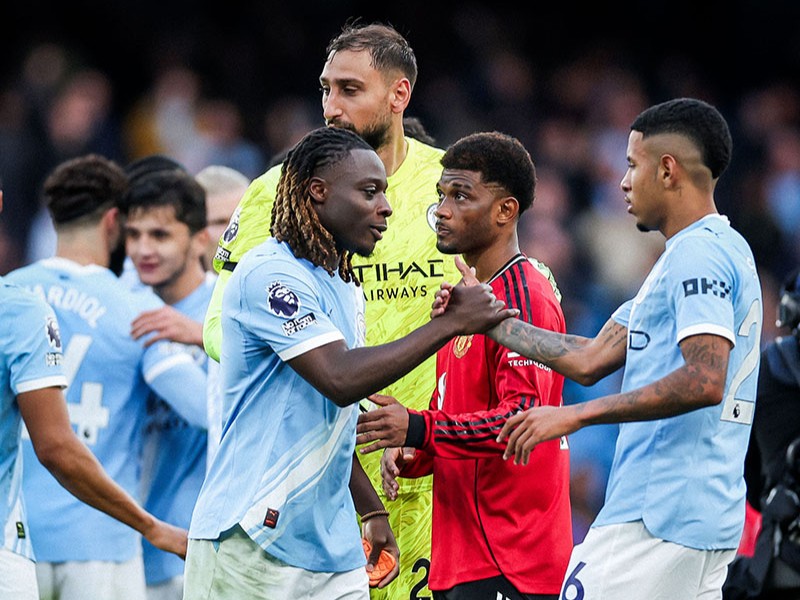Ruben Amorim’s Manchester United endured another tough afternoon at the Etihad, falling to a 3-0 defeat that deepened their poor domestic record under the Portuguese coach. The game highlighted how Manchester City exploited United’s tactical shape, especially down their own left flank.
Pep Guardiola instructed left-back Nico O’Reilly to stay wide, tempting right wing-back Noussair Mazraoui out of position. With O’Reilly stretching the width, Jeremy Doku moved inside from the wing, leaving Mazraoui unsure whether to close down the ball or guard the central lane.
City’s rotations allowed Doku, Rodri, Phil Foden – who dropped deeper – and Tijjani Reijnders to form a square around United’s central pairing. This gave the home side a four-versus-two superiority in midfield, mirroring the blueprint Fulham used earlier in the season when Alex Iwobi drifted inside to overload United.
Disjointed pressing and smart pinning
With Doku drifting centrally, right center-back Leny Yoro was pulled high up the pitch to meet him. That aggressive movement occasionally made it a four-against-three battle, but Yoro often retreated to protect his defensive line, leaving gaps between the lines. The inconsistency meant City regularly had a free player available.
Bruno Fernandes admitted afterwards that United needed to be “braver with full pressure” to prevent such situations. He explained that the plan was for a midfielder to press Rodri while a defender stepped out on Foden, yet confusion between himself and Yoro left both City players free at times.
City also used pinning to undermine United’s aggressive back-five system. By keeping O’Reilly fixed to the touchline, Mazraoui was pinned wide, freeing Doku to roam into midfield. On the opposite side, Reijnders occupied Luke Shaw, stopping him from stepping out. That positioning created room for Doku to receive unmarked and drive at United’s defense, including for the opening goal.
Untracked runners and the question of adaptation
United’s midfield problems extended into their penalty area. For City’s first goal, both Fernandes and Manuel Ugarte were back defending, yet no one followed the late run into the box, allowing Foden to score. Similar lapses have hurt United before, such as Fulham’s winner from Emile Smith Rowe last month, again after Fernandes lost his runner.
Fernandes is valued for his energy and creativity, but defensive instincts are not his strength. In contrast, Guardiola used Foden – whose timing of runs is sharp – behind Erling Haaland, a selection that paid off.
After the match, debate centered on whether United’s issues stem from player quality or Amorim’s system. While better individuals might execute the high pressing more effectively, opponents have repeatedly found ways to create overloads against United’s shape. Guardiola, by contrast, showed a readiness to adjust his setup, even hinting at a more direct approach through new goalkeeper Gianluigi Donnarumma.
Amorim insisted he will not change his philosophy, saying, “When I want to change my philosophy, I will change. If not, you have to change the man.” With no reinforcements arriving before January, the challenge now is whether he can refine his structure or redeploy players to stem the tactical flaws that City so effectively exposed.




